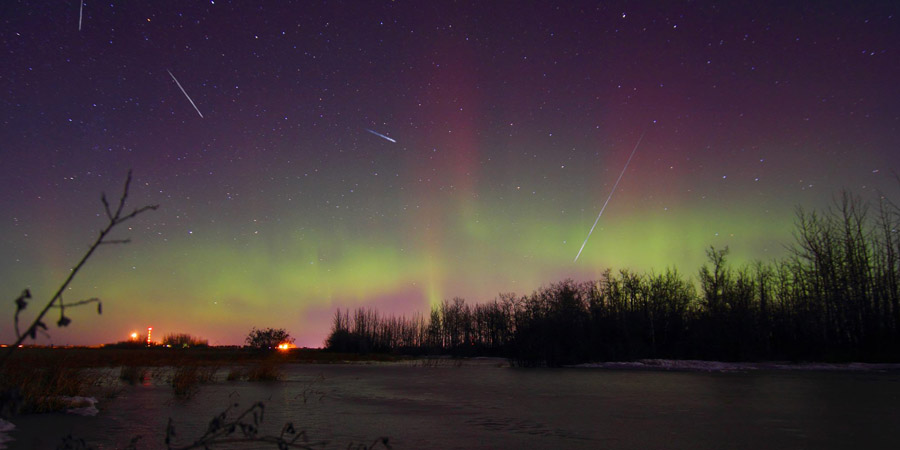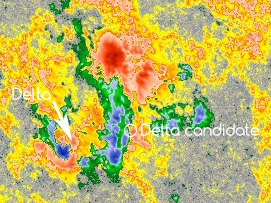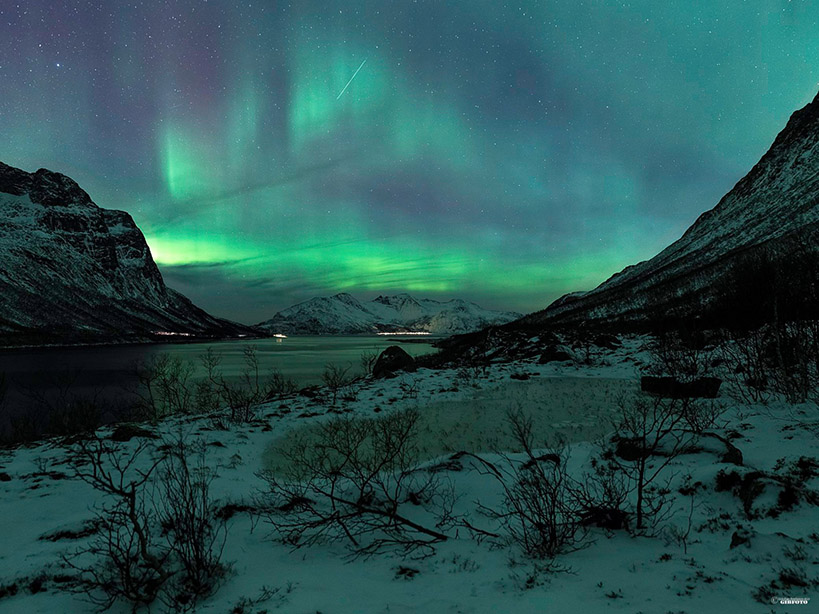Moderate solar activity, enhanced auroral activity
Sunday, 14 December 2014 21:25 UTC

Solar activity increased to moderate levels thanks to an impulsive M1.6 solar flare at 19:33 UTC. Source was a cluster of sunspots just east of sunspot region 2237 which received number 2242. Auroral activity remains elevated as Earth remains under influence of coronal hole high speed stream effects. Photographers at high latitudes have been taking amazing auroral shots the past few days and some even managed to catch some Geminid meteors like Zack Splaine Photography from Canada did in this shot! Stunning!
Moderate solar activity
Moderately strong M1.6 solar #flare - Follow live on http://t.co/8JIfkaXUPc pic.twitter.com/uu9DGQaig6
— SpaceWeatherLive (@_SpaceWeather_) 14 december 2014
Solar activity increased to moderate levels thanks to an impulsive M1.6 solar flare at 19:33 UTC. Source was a cluster of sunspots just east of sunspot region 2237 which recieved number 2242. The solar flare was impulsive and SDO images show that is was likely not an eruptive event despite the detection of a Type II Radio Emission as reported by the NOAA SWPC.
ALERT: Type II Radio Emission Begin Time: 2014 Dec 14 1929 UTC Estimated Velocity: 1028 km/s Comment: Associated with an M1 flare from Region 2242 (S19E43).
Sunspot region 2242 was not just responsible for an M1 event today, it also produced numerous C-class events. If we take a closer look at sunspot region we can right away see why it is flaring so much. It has a Beta-Gamma-Delta magnetic layout. It has a weak delta spot among the trailing sunspots and a delta candidate (not a delta spot yet but worth keeping an eye on) just to west of that. The group has some magnetic mixing and should be monitored for further development. Another low-level M-class event can not be excluded.


M-class flare probability for the coming 24 hours: 30% chance
X-class flare probability for the coming 24 hours: 1% chance
Enhanced auroral activity
Auroral activity remains elevated as Earth remains under influence of coronal hole high speed stream effects. The direction of the IMF is occasionally drifiting south and aurora has often been filling the arctic skies during the past few days. Just take a look at this amazing image by Gibfoto from Norway. He even managed to capture a Geminid meteor on this shot!

Another stream of enhanced solar wind is expected to arrive within the next 24 hours so the show is not over yet for high latitude sky watchers! Auroral activity will likely remain enhanced for the next 3 days. Geomagnetic storming is however not expected.
Images: Zack Splaine Photography, NASA SDO and Gibfoto.
Thank you for reading this article! Did you have any trouble with the technical terms used in this article? Our help section is the place to be where you can find in-depth articles, a FAQ and a list with common abbreviations. Still puzzled? Just post on our forum where we will help you the best we can!
Latest news
Latest forum messages
Support SpaceWeatherLive.com!
A lot of people come to SpaceWeatherLive to follow the Sun's activity or if there is aurora to be seen, but with more traffic comes higher server costs. Consider a donation if you enjoy SpaceWeatherLive so we can keep the website online!

Space weather facts
| Last X-flare | 2025/03/28 | X1.1 |
| Last M-flare | 2025/03/31 | M1.2 |
| Last geomagnetic storm | 2025/03/27 | Kp5 (G1) |
| Spotless days | |
|---|---|
| Last spotless day | 2022/06/08 |
| Monthly mean Sunspot Number | |
|---|---|
| February 2025 | 154.6 +17.6 |
| Last 30 days | 127.7 -23.5 |


